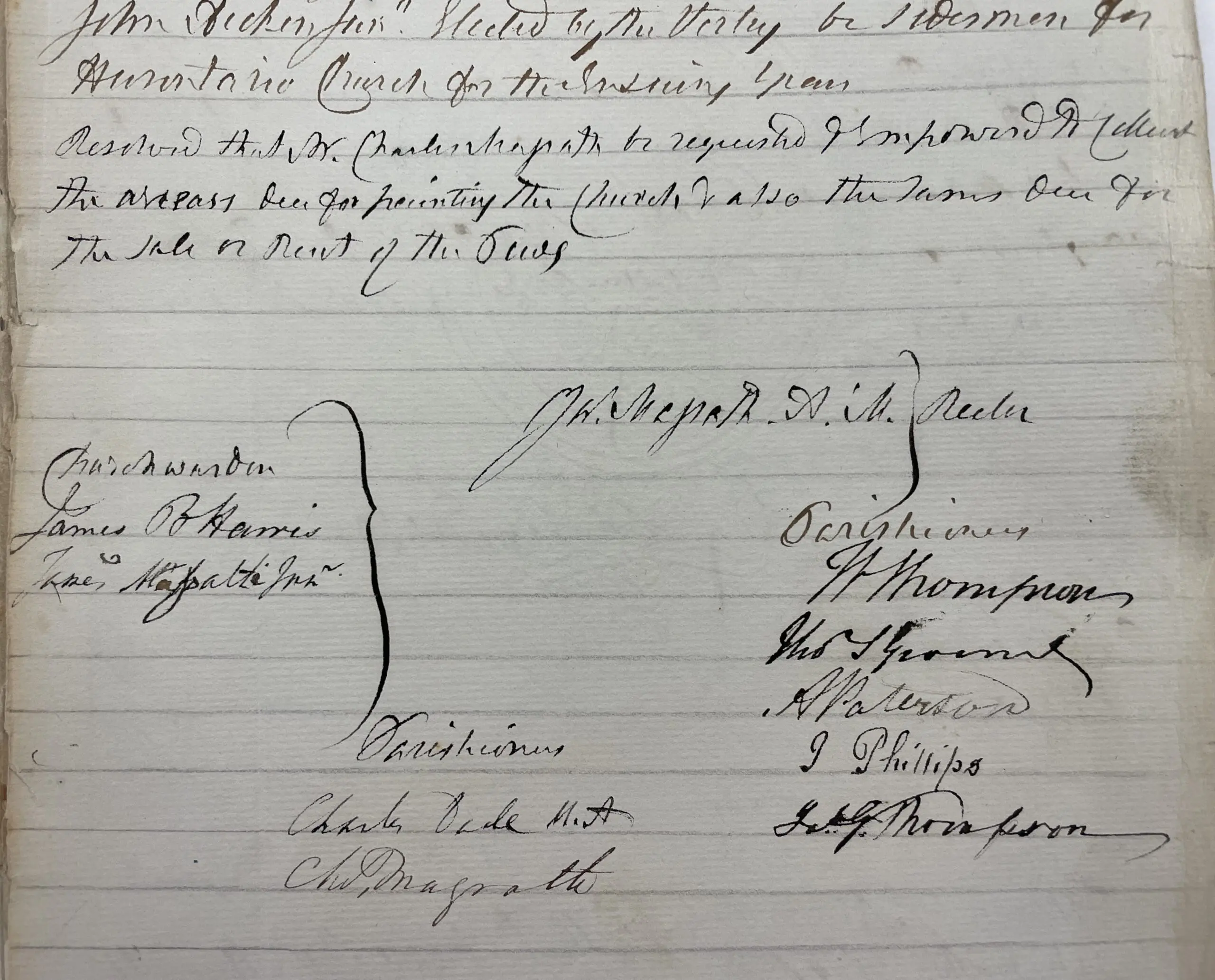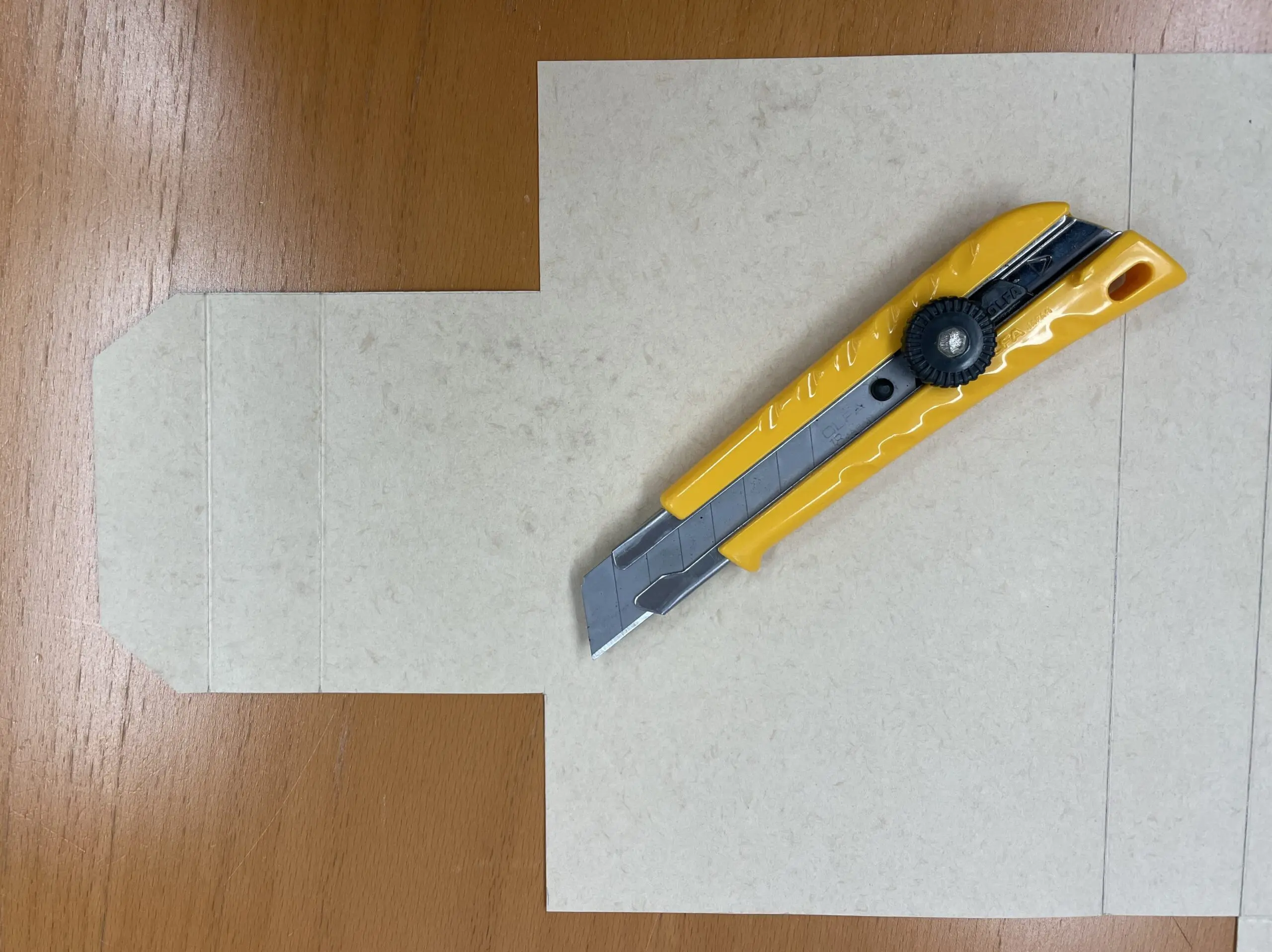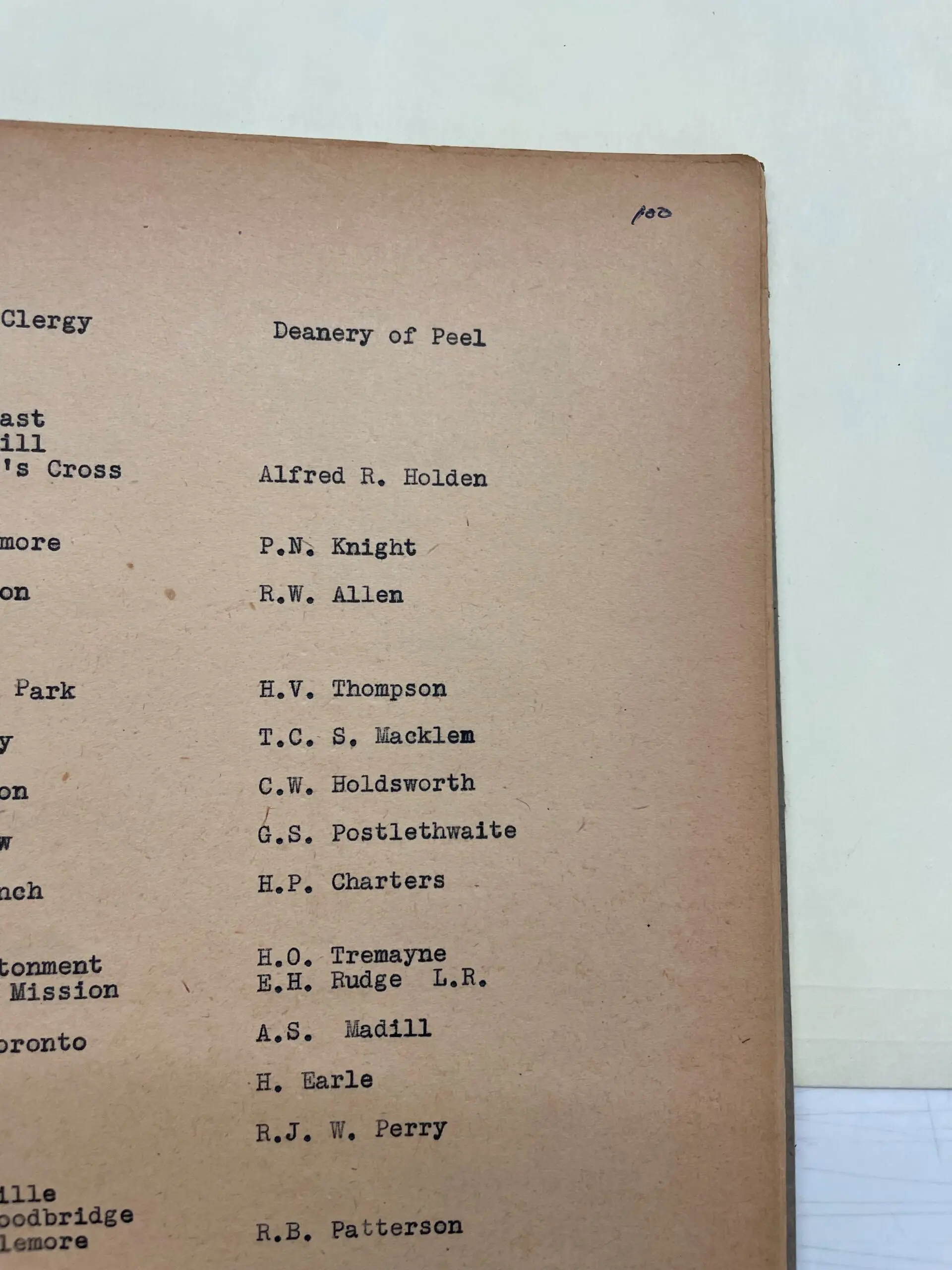
Archives Awareness A-Z
We’re joining the Archives of Ontario in its month-long #ArchivesAtoZ campaign. The aim is to increase the public’s awareness of archives and their collections. We’ll be sharing four posts throughout this month showcasing items from our holdings or providing information about Archives terminology based on each letter of the alphabet.
This week we will finish the alphabet! We hope you’ve enjoyed learning a little more about your Diocesan Archives.
U – St. Philip, Unionville

St. Philip on-the-Hill, Unionville has an interesting history with an early connection to the Lutheran Church. In the early 1800s, the Unionville area was largely settled by Dutch, German and Danish Lutherans. After the Lutheran pastor Rev. Peterson left in 1829, they had trouble finding a German-speaking Lutheran minister. This problem was solved by the arrival of the Rev. Mayerhoffer, an Austrian Roman Catholic priest who had recently been ordained in the Church of England. The Lutherans and Anglicans shared the Lutheran St. Philip’s Church, with a German Lutheran service conducted in the morning and Anglican services conducted in the afternoon.
In 1837 during the Upper Canada Rebellion, a split between the two congregations occurred, as the Lutherans sympathized with William Lyon Mackenzie, while the Anglicans supported the Family Compact. Stories suggest that one Sunday, the Rev. Mayerhoffer arrived to conduct the usual Anglican service only to find the church locked and a guard in place to prevent him from entering. The Diocesan Archives holds only a photographed copy of the early register that begins in 1819. The entries prior to the arrival of Rev. Mayerhoffer in 1829 are for the Lutheran congregation and are largely in German. After 1829, the register contains entries for both the Lutheran and Anglican congregations. The original register remained with Rev. Mayerhoffer rather than with the church and ended up in an a personal collection before being donated to the Markham Museum.

V – Vestry Minutes

The Diocese holds the vestry minutes for many congregations. The earliest vestry minutes we have are for St. James Cathedral, and include Warden minutes from 1807 and the first vestry meetings. Other early vestry minutes on deposit include St. Peter, Cobourg vestry minutes beginning in 1827, St. Peter, Erindale beginning in 1828, Christ Church, Mimico beginning in 1834 and St. John, Bowmanville beginning in 1841. These vestry minutes are a useful source of information on the early activities of a church. Vestry minutes can also be beneficial to genealogists, as their ancestors may have been active members of the church and participated in vestry meetings.

W – War Memorials
World War I and World War II saw many young men go to war, and sadly many lost their lives. A number of parishes have memorial plaques and other memorials in recognition of the members of their parish who served in these wars. Veteran Affairs Canada has an internet-based database of all military memorials. If you have a military memorial in your parish, it’s helpful for Veterans Affairs to get information about where the memorial is located in the church or to get photographs to add to the existing listing.

X – X-Acto Knife

As the Diocesan Archives continues to work on conservation efforts, X-acto knives allow us to safely and easily cut mat board and paper to make acid-free enclosures for archival material. These custom-made enclosures ensure that delicate material doesn’t shift and get damaged in larger storage containers, which may house multiple items.


Y – Yellowing
Yellowing is a process that occurs with paper as it ages due to acidification. This acidification ultimately leads to the paper’s deterioration. While yellowing may occur with all paper made from wood pulp, it is most notable with newspaper. If a newspaper clipping is stored directly against another type of paper, it will begin to yellow the other paper in the area where it is touching more quickly than the area around the clipping. To mitigate yellowing, records are stored in acid-free buffered folders and boxes, and as we review materials newspaper clippings are separated from other papers.

Z – Zeal
We give thanks to priests in our Diocese, including the Rev. Canon Allen and the Rev. Canon Bracken, who had a zeal for history. They worked tirelessly to document the history of the Diocese and establish a Diocesan Archives. They began the process of collecting some of the very early records of the Synod House and parishes. This has allowed these records to be preserved and continue to be made available to researchers